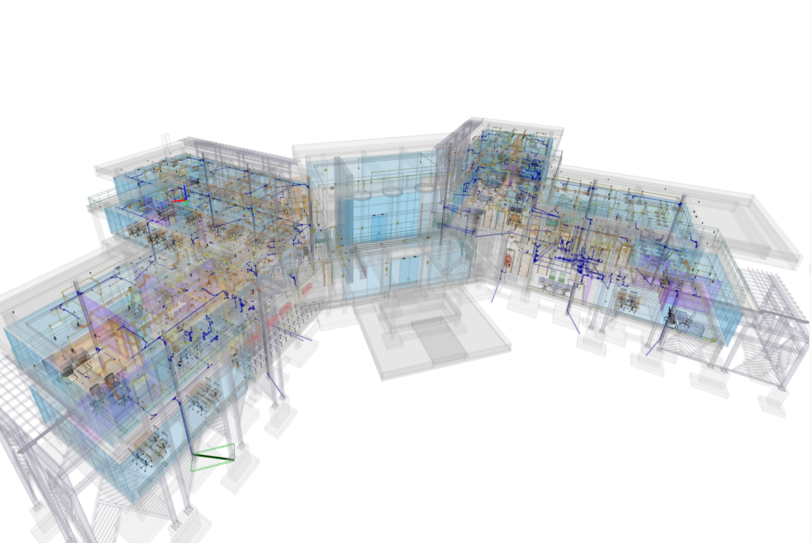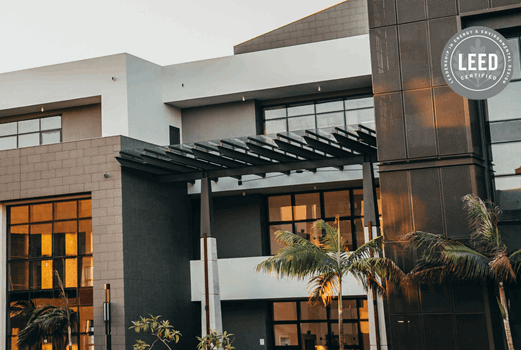BIM has revolutionised the construction industry and we want our clients to tap into these benefits of BIM:
- Better communication and collaboration among design and construction teams
- Improve participation of client in the design process
- Better and quicker value engineering
- Identifying and resolving coordination problems before going to construction
- Reduced construction cost
- Improved coordination and clash detection
- As-built BIM model for more efficient asset and maintenance management
Design teams works in a fragmented manner, even though they are using BIM, and client do not reap the benefits that BIM should bring to a project. Our BIM management and coordination services are very comprehensive and aims at helping our clients lower down their construction costs and improve quality on site.
We can manage the BIM design and coordination process, BIM shop models production by contractors and prepare as-built BIM models which are ready for computerised asset and maintenance management.
Cloud Collaboration with teams across various locations locally and internationally with CDE
We work with a couple of CDE which we have carefully selected for our clients, based on their budget. These can:
- Securely co-author Revit models in real time
- Allow all stakeholders to review design development from any device without the need to have a BIM software
- Allow client to fully view, and participate in the design process, design progress and comment on through any device
- Reduce rework with trackable activity
- Visualise design changes to help streamline decision-making and lines of approval
- Identify and resolve design clashes, conflicts and missing information whch can be very costly down the line
3D BIM models offer an advantage over traditional 2D drawings by clearly conveying design intentions, but virtual reality (VR) technology takes it a step further by allowing key stakeholders to better understand the project through immersive design visualisations. Many of our clients use VR and Augmented Reality (AR) to test designs before construction and see what their project will look like in real size. This leads to clearer expectations and fewer scope changes during construction, saving time and money. AR is also used on-site to help contractors accurately install complex systems, reducing installation time and waste. Overall, BIM helps reduce construction costs through better documentation and accurate pre-build data on materials and other project details, resulting in less time spent fixing inaccuracies.
Reduced Costs
BIM is a powerful tool that allows you to visualise and understand your project before it goes to construction. This helps you address non-compliance early and avoid costly reworks during construction. BIM also detects clashes and coordination problems before construction begins and allows for automated clash detection, eliminating the need for rework and last minute changes. It also helps generate accurate quantities and bills of quantities, leading to competitive bids and reduced time to go to tender.
Improved Collaboration and Communication
Our cloud-based BIM CDE solutions enable team members and stakeholders to share project models, coordinate design, exchange insights and collaborate seamlessly in real time. You can even participate in the process and easily approve designs that meet your brief. And because the models are cloud-based, you can access them from anywhere. Improved collaboration and coordination leads to better design and better buildings.
Quicker turnaround
Utilising BIM design allows for concurrent calculations, simulations, drafting and documentation on a single platform, leading to a shorter design phase and quicker project start.
Safer Sites
One of the major benefits of BIM is that it improves construction site safety. The software carries out automated safety evaluations and visual risk analysis. These allow it to identify and alert to potential hazards before they grow into real problems. That helps minimize health and safety risks as well as improves site planning and logistics throughout the project lifecycle.
Improved Quality
BIM and our CDE allow for close collaboration with architects, engineers, and contractors throughout all stages of the project, resulting in improved quality. During the design phase, BIM can reduce errors and mistakes on the construction site. It allows contractors to incorporate exact shop fabrication details from specialist suppliers and test for buildability in a virtual 3D prototype. All of these factors contribute to higher quality of work.
Choose BIM and our CDE to ensure your project is a success.
Increased Use of Prefabrication
BIM software can generate databases and production drawings for manufacturing purposes, thereby allowing for the increased use of modular construction technology and prefabrication. The creation of designs in a controlled environment helps reduce waste, boost efficiency, improve quality and reduce material and labor costs, resulting in lower construction costs.
Better Operations, Maintenance and Asset Management after Handing Over
Our BIM for Facilities Management services optimise your BIM model for integration into your maintenance management software at handover. We offer a solution for efficiently managing all assets and maintenance planning directly from the as-built model, along with 3D interactive building user guide for facilities managers.




